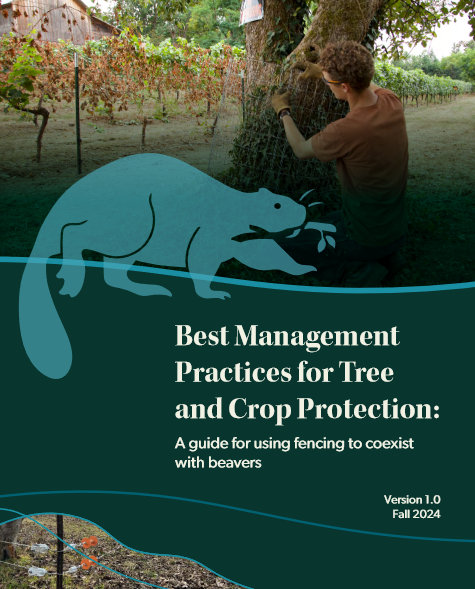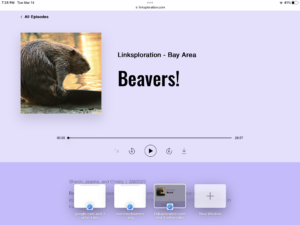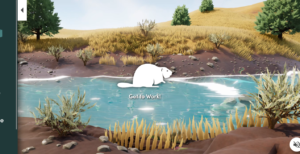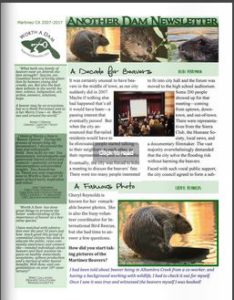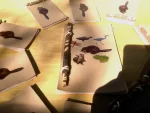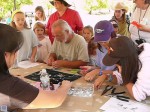The struggle to keep water on a drying landscape always seems to wind up – well if not directly pro-beaver, then at least firmly beaver-adjacent. Take this recent article about Montana for instance. I’m not sure how much faith I’d personally place in a college whose initials are officially “UM” but I like where this is headed.
Drought is coming to Montana. How do we protect ourselves
Last year, Montana witnessed the driest summer on record. It was also the second hottest summer, which made the weather more unbearable. This extreme weather, driven by a warming climate, directly led to huge crop loss and the biggest wildfire season ever. According to the US Department of Agriculture, drought decreased wheat production in Montana and the Dakotas by 64 million bushels in 2017, and an estimated 1.3 million acres of forest burned across Montana.
“Water is the second air, the main resource we need,” said Nicholas L. Silverman, a hydrologist and water resources engineer who studies climate at the University of Montana. Riparian resiliency is the ability of waterside vegetation recovering from damages. These vegetation areas can be categorized into two types: low resiliency and high resiliency. Low-resilient vegetation are sensitive to environmental changes. When drought happens, they will die. On the contrary, high-resilient vegetation would bounce back and help protect against drought.
Wait, I’m trying to guess which kind beaver build. Hi or Low?

To deal with this vicious cycle, Silverman said, we need to build high-resilient riparian areas. Silverman suggests three strategies to help riparian areas recover and become more resilient to the warming climate. The first is to reintroduce more beavers. According to Glynnis Hood, an environmental scientist at the University of Alberta-Augustana who specializes in wetland ecology and the impact of beavers, beaver dams can help store more water. She looked at 54 years of data in Elk Island National Park, and found that beaver dams secure up to nine times that of a pond or water source without beavers.
The second strategy is to build artificial ponds that mimic natural systems. Humans have significantly impacted aquatic ecosystems, and human enhancements can improve their resiliency one will help us to preserve water flows.
First, he concludes we need ACTUAL BEAVERS to do their thing and then we need to pretend to be beavers and do more of their thing. Hurray! They go on to say then everyone needs to change how they graze their cattle so that some plants are left and ACTUAL BEAVER can come you know, do their thing.. The answers to Montana’s drought has a flat tail, that’s for sure.
Ultimately, reducing greenhouse gas emissions will help to reduce the worst impacts of drought in Montana, but in the meantime, helping streams and rivers cope with rising temperatures will fend off some of the worst impacts of a warming planet.

Speaking of which I came across the COOLEST resource on the entire internet yesterday, I know you’ll want to play with it. Right click on a particular river or stream to find its watershed anywhere in the country. This is the one our beavers live in, but you might want to check your aunts home in Georgia or Wyoming too.



 recent essay published on the Sierra Club Colorado Chapter website suggests that a typical beaver family is capable of building a pond that stores about 10 acre-feet of water — about 3.3 million gallons. Beavers are apparently willing to perform this service year after year, with absolutely no government subsidy — and without any need for a government bureaucracy to supervise their work. All a beaver asks for is a few saplings, now and then, to munch on.
recent essay published on the Sierra Club Colorado Chapter website suggests that a typical beaver family is capable of building a pond that stores about 10 acre-feet of water — about 3.3 million gallons. Beavers are apparently willing to perform this service year after year, with absolutely no government subsidy — and without any need for a government bureaucracy to supervise their work. All a beaver asks for is a few saplings, now and then, to munch on.


 – Increasing water storage in the mountain meadows of the arid West through diverse river restoration strategies has local benefits for vegetation but is unlikely to benefit downstream flows, according to an
– Increasing water storage in the mountain meadows of the arid West through diverse river restoration strategies has local benefits for vegetation but is unlikely to benefit downstream flows, according to an 
 The Sierra Nevada mountain range looms over California, stretching 400 miles from Oregon to Tehachapi Pass in Kern County. The range contains the highest point in the continental United States, Mount Whitney, and is home to both the oldest and largest trees in the world—as well as diverse wildlife, from mountain lions to mosquitos.
The Sierra Nevada mountain range looms over California, stretching 400 miles from Oregon to Tehachapi Pass in Kern County. The range contains the highest point in the continental United States, Mount Whitney, and is home to both the oldest and largest trees in the world—as well as diverse wildlife, from mountain lions to mosquitos.


